Atracții turistice
- Atracții turistice
- Clădiri istorice
- Turism religios
- Turism de natură
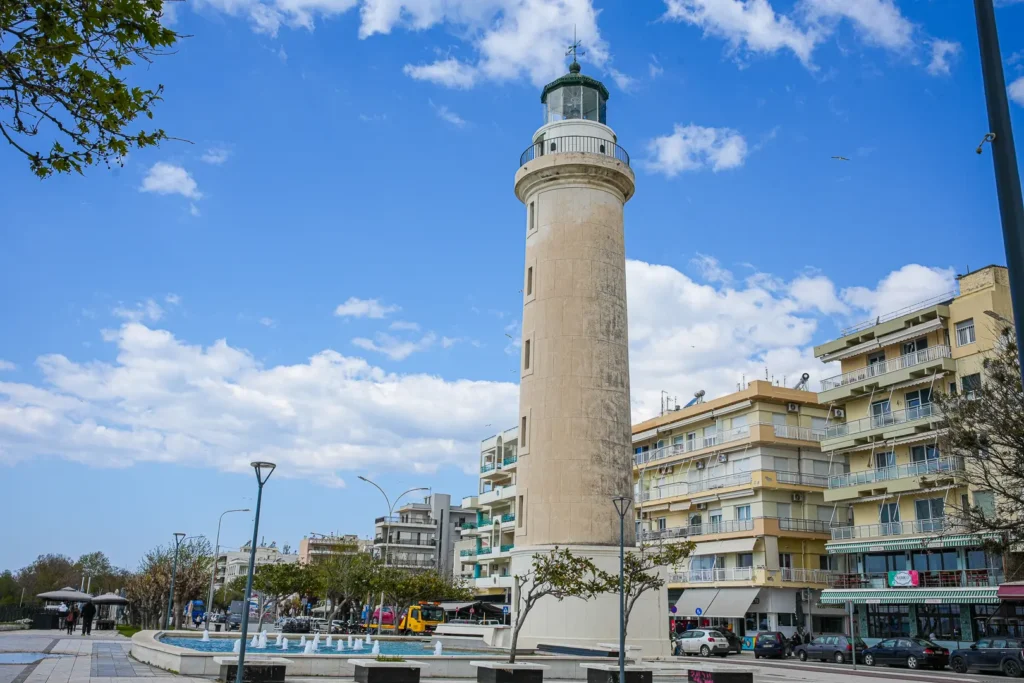
Lighthouse of Alexandroupoli
The Lighthouse of Alexandroupoli, the city’s iconic landmark, has stood on the western side of the port since 1880, illuminating the seas and guiding sailors. Standing 18 meters tall with 98 steps leading to its top, it offers a panoramic view of the Thracian Sea. Its light beam reaches up to 44 kilometers, and its technology has evolved from acetylene to electric lighting, maintaining uninterrupted operation. At the entrance, a marble plaque tells its story, serving as a reminder of its continuous role as a guardian of maritime routes and a symbol of Alexandroupoli.

Ancient City of Zone
The archaeological site of Zone, located 20 km west of Alexandroupoli, reveals the history of an ancient city founded in the 6th century BC by settlers from Samothrace. As a significant trade center, it featured walls, temples, houses, and workshops, offering a unique glimpse into ancient life. A highlight is the Temple of Apollo, the only identified Archaic temple of the god in Thrace, where rare findings have been discovered, including an Archaic kouros torso and vessels inscribed with Thracian dedications. Excavated since 1966, the site is open to visitors, providing a window into the region’s glorious past.

Roman Baths of Traianoupoli
The Roman Baths of Traianoupoli are located 14 km east of Alexandroupoli, near the modern village of Loutros. The city was founded in the 2nd century AD by Emperor Trajan and remained an important urban center for over a millennium. Its location was chosen for its thermal springs, renowned for their healing properties, which are still in use today. A notable structure is the “Hana” (4th century), which served as a guesthouse,while remains of bathhouses, churches, and the Muslim tekke of Isiklar also survive. Today, the area offers tourist facilities for visitors seeking therapy or relaxation.

Vechiul Drum Egnatia
The Via Egnatia, one of antiquity’s most significant military and commercial roads, was built between 146 and 120 BC by the proconsul of Macedonia, Gnaeus Egnatius, connecting Rome with its eastern conquests. In the region pf Alexandroupoli, the most well-preserved sections of the road have been identified, with the largest mountainous segment located in Komaros and three well-preserved flat sections near Alexandroupoli and Traianoupoli. Visitors can see and walk along the ancient pavement, following informational signs placed at various points along the route.

Cave of Cyclops Polyphemus
The Cave of Cyclops Polyphemus, according to local tradition, was a sacred site for the Greek deities of Thrace and is linked to the myth of Polyphemus, the Cyclops blinded by Odysseus. Located on the beach of Makri, the cave reveals a significant Neolithic settlement dating back to around 4500 BC. The cave complex consists of three chambers with carved niches, staircases, reservoirs, and an observatory. The large nearby rocks are said to be the ones hurled by the enraged Cyclops. Visitors can enjoy stunning views of the Thracian Sea while experiencing a blend of history and natural beauty.
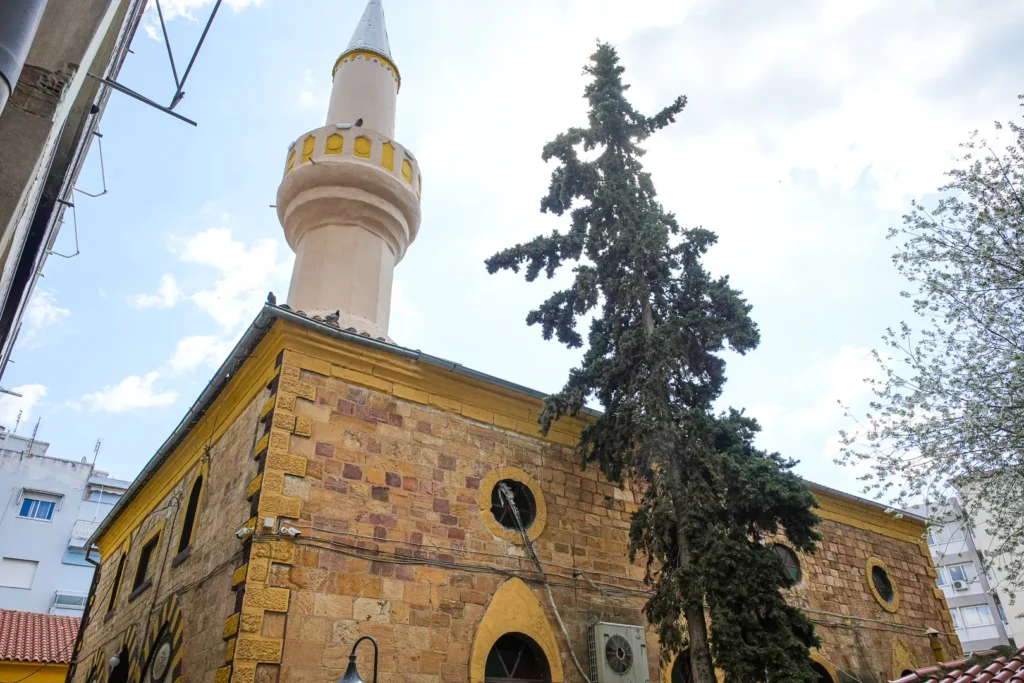
Muslim Mosque of Alexandroupoli
The Muslim Mosque of Alexandroupoli, built in the 19th century, is one of the city’s oldest buildings, reflecting its Ottoman heritage. Originally a two-story stone structure, it housed both an Ottoman religious school and served as a place of worship when the city was known as “Dedeağaç.” The prayer hall features elaborate marble decorations and engraved inscriptions, while the marble tomb of General Faik Hussein Pasha adds historical significance. The mosque was targeted by arson twice—first during the Bulgarian occupation and later in 1993—but was restored on both occasions by the Greek state.
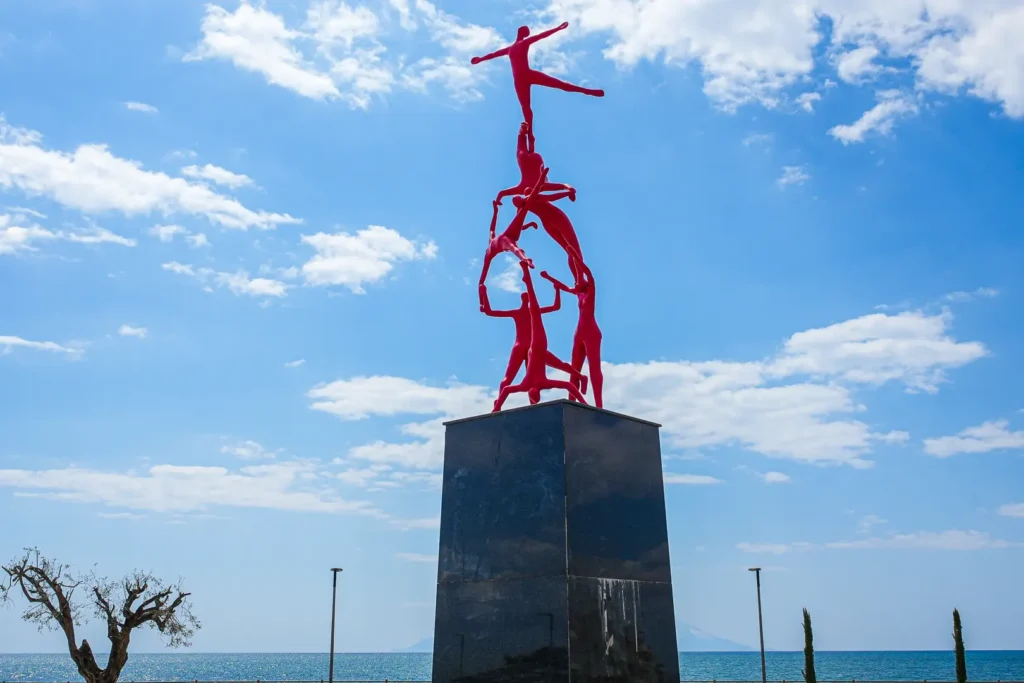
Anatasis Delta Sculpture
The “Anatasis Delta” sculpture by Kostis Georgiou was initially placed in 2018 along the coastal road near the lighthouse and later relocated in 2021 near the “Argo” Park by the sea. Featuring seven abstract red figures resembling dancers or athletes, the 2.2-meter-high, 350-kilogram artwork sits on an elevated pedestal, enhancing the area’s aesthetics. Kostis Georgiou, an internationally acclaimed artist with exhibitions in major museums worldwide, expresses his appreciation for Alexandroupoli and its people through this dynamic and vibrant creation.

Floral Clock
The Floral Clock of Alexandroupoli, located along the coastal road near the lighthouse, is a distinctive landmark that combines functionality with art. The clock is adorned with blooming plants that change with the seasons, offering a lively and colorful display. Its construction is part of the municipality’s efforts to enhance the urban landscape and improve the city’s aesthetics, providing a pleasant space for strolling and relaxation.

The House of Antoinette
The House of Antoinette in Alexandroupoli houses the Helleno-French Friendship Association “La Maison d’Antoinette,” founded in 2002 to promote Greek-French friendship. The house was donated by Antoinette Demtsan, a former French teacher, to function as a foreign language library. After the municipality was unable to operate it, the house was entrusted to the association, which organizes cultural events in honor of Antoinette.

Old French Railway Station
The Old French Railway Station in Alexandroupoli, also known as the “French Station,” is one of the city’s most historic buildings. Construction began in 1871 and was completed in 1873, with the involvement of European engineers, including the French. The building, primarily constructed from wood, served as the region’s central railway station and features an architectural style that blends elements of European railway tradition. Today, the building remains a protected cultural monument, and restoration plans have been approved to highlight its historical significance.

Gare Militaire (Military Station)
The Military Station (Gare Militaire) in Alexandroupoli was a significant hub connecting the city with Thessaloniki and Istanbul. Initially, trains would park at the old station, with a connecting branch facilitating the transfer of wagons. Today, the building of the Military Station houses the 1st Kindergarten of Alexandroupoli, preserving its historical significance while offering a link to the city’s past.

O.S.E. Office Building
The O.S.E. office building in Alexandroupoli is an important example of architectural heritage, connected to the city’s historical development as a railway hub. Built to house the administrative services of the Organization, the building is distinguished by its imposing facade and features. In 2022, restoration work began to maintain and preserve the listed building.

Post Office
The Post Officeοf Alexandroupoli, built in the early 20th century at the junction of Megalou Alexandrou and Nikiforou Foka Streets, has been listed as a preserved monument since 2012 due to its architectural and historical value. Originally a stone building with a wooden roof, it was expanded in 1950 with iron railings. Notable features include the rectangular cornerstones and the tile-roofed roof with a surrounding parapet. During the Ottoman period, the building served as a headquarters and later as an Allied base. A significant historical event occurred in May 1920 when the French flag was lowered, and the Greek flag was raised shortly before the arrival of Greek forces and the liberation of Alexandroupoli.
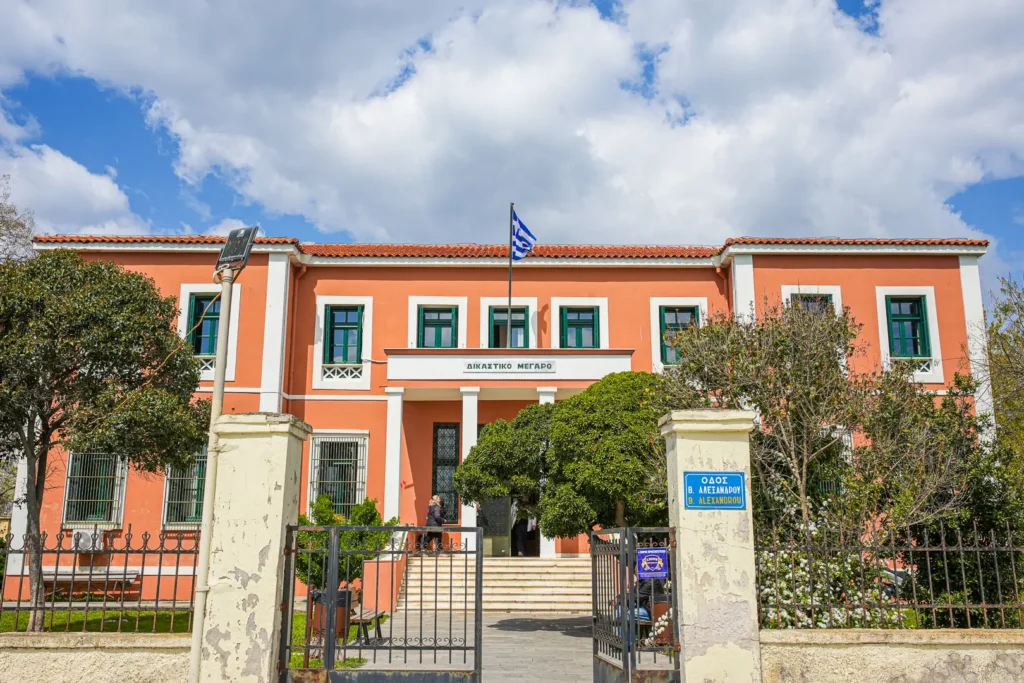
Courthouse Building
The building of the Courts of Justice of Alexandroupoli, also known as the “Courthouse”, is an important architectural and historical monument of the city. It presents neoclassical architecture with features such as symmetrical facade, large columns, and elaborate decoration. Initially, it housed the judicial services of the region and was a center of legal activities for Alexandroupoli. Its historical significance is reinforced by the fact that it witnessed important events during the liberation of the city in 1920. Today, the building continues to host the Courtsοf Alexandroupoli, maintaining its function as a center for the administration of justice in the region.

First Kindergarten of Alexandroupoli
The First Kindergarten of Alexandroupoli, constructed around 1890, is one of the buildings from the old administrative center built by the Ottoman authorities. It has continuously operated as a kindergarten, serving the needs of the local community. The building is a one-story, stone-built structure with plastered exterior walls and an elevated position. It features a tiled roof with a surrounding parapet. The entrance, symmetrically placed on the facade, leads to a large courtyard around the building. Its architecture is reminiscent of that of the city’s Post Office and Courthouse.

Episcopate (Scouts Building)
The Episcopate, also known as the “Scouts Building,” was built in 1896 next to the Catholic Church of St. Joseph in Alexandroupoli. Initially, it served as the residence of the Vicar priest and episcopate of the Catholic community. After the departure of the Catholics, the building housed various educational institutions, such as the Commercial School and the Economic Gymnasium, until the mid-1970s. From then until 2007, it hosted the Local Scout Division of Alexandroupoli and the 2nd Scout Group. Today, the building remains vacant, with recent plans from the Catholic Church for its renovation.
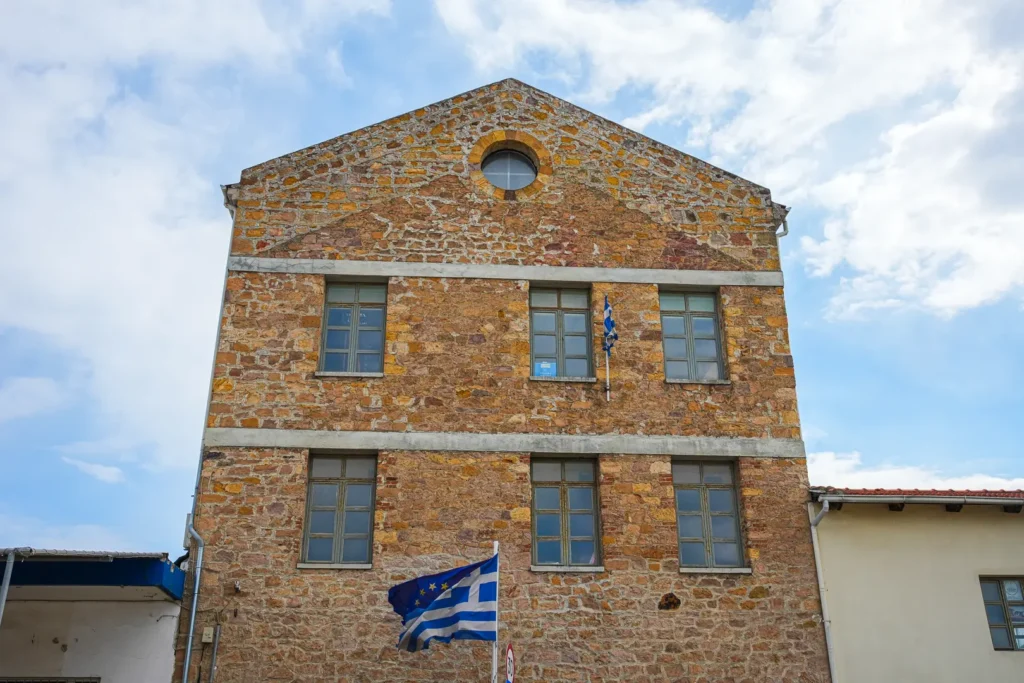
Masouras Mill
Masouras Mill is an iconic three-story building in Alexandroupoli, constructed between 1930 and 1933 by George Masouras, a businessman from the Peloponnese who was active in the flour industry. The building, with its rectangular shape and tiled roof, is a characteristic example of industrial architecture of the time. Initially, the mill used a large “stone mill” for grinding grain. Today, Masouras Mill has been restored and functions as a cultural and art center, hosting various cultural events and activities.

Port Warehouses
The Port Warehouses of Alexandroupoli, constructed in 1870 by the Eastern Railways Company, are a significant part of the city’s history. Originally, there were nine warehouses, divided into two complexes: one with five warehouses to the west and one with four to the east, which were connected by iron bridges. These warehouses served the commercial traffic brought by the railway to the port. Today, renovation and restoration works are underway for warehouses 1, 2, and 3, with the aim of repurposing them for various uses by the Municipality of Alexandroupoli.

Clădirea Autorității Portuare
The Port Authority building of Alexandroupoli is a two-story pre-war structure with a basement, originally belonging to the Khatzikian family of Armenian descent. In 1950, the family donated the building to the Greek State. Initially, it housed the Security Department of the Police Directorate, while today, it hosts the Port Authority of Alexandroupoli. The building is located at the central square of the Lighthouse, opposite the city’s Monument to the Fallen.

Monastery of Panagia Kosmosotira of Ferres
The Monastery of Panagia Kosmosotirais located in the center of the town of Ferres, near the Evros River. It was founded in 1151-1152 AD by Isaakios Komnenos, the son of Emperor Alexios I Komnenos. The church follows the cruciform design with a dome and is surrounded by a fortifying wall with walls, towers, and a gate. From the original monastic complex, today the church, parts of the walls, and the towers have been preserved. The feast day of the church is celebrated every year on August 15th and has become the Global Pilgrimage of Thracians.
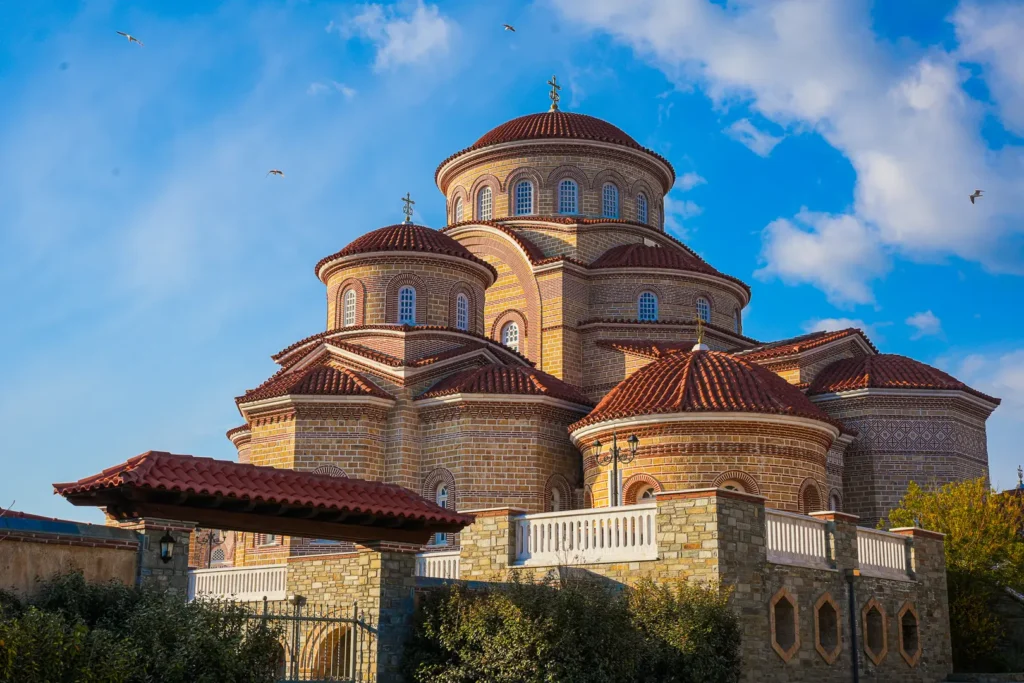
Monastery of Panagia Evrou
The Monastery of Panagia Evrou, located in the seaside area of Makri near Alexandroupoli, was founded in 1978 by Metropolitan Anthimos. It is dedicated to the Dormition of the Theotokos and houses the sacred icon of Panagia Evrou, which is considered miraculous. The monastery celebrates on August 23rd with grand festivities and has become an important religious and cultural center in the region, offering spiritual renewal to its visitors.
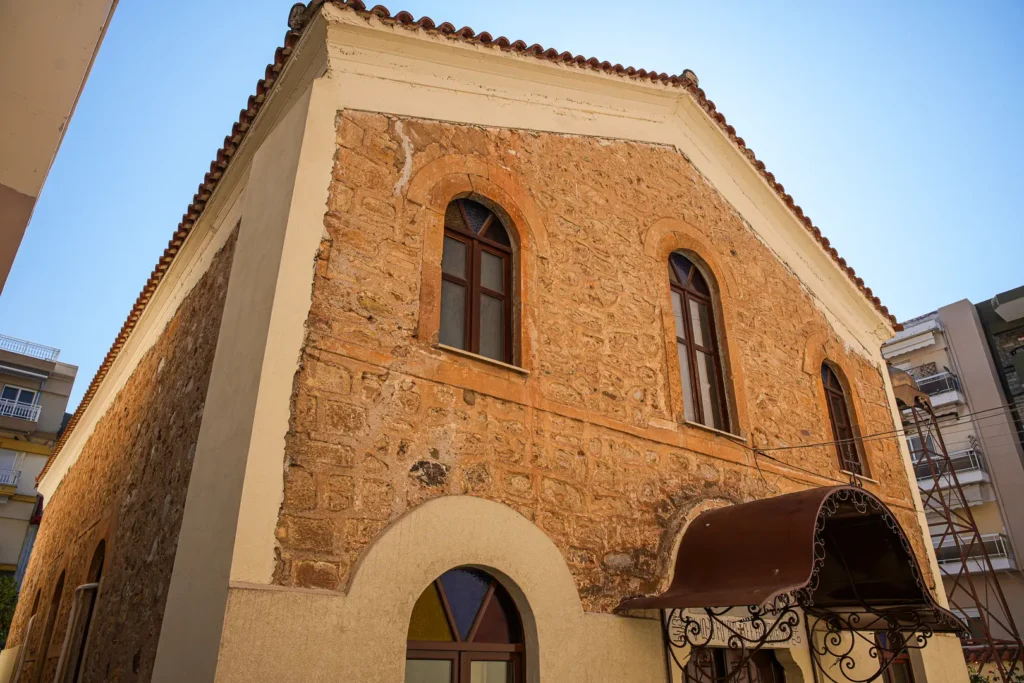
Armenian Church of St. John the Baptist (Karabet)
The Armenian Church of St. John the Baptist, also known as Karabet, is located inAlexandroupolis and serves as an important religious and cultural center for the Armenian community. The church, built in 1875 and completed in 1890, is stone-built and follows the basilica style without a dome. Dedicated to St. John the Baptist, it is the first official Orthodox Christian church in Alexandroupolis and continues to serve the religious needs of the city’s Armenian community.

Monastery of Dadia, Evros
The Monastery of Dadia, dedicated to the Birth of the Virgin Mary, is located near the village of Dadia, approximately 10.5 km southwest of Soufli, within the Dadia–Leukimmi–Soufli National Park. It was founded in the 17th century, but was destroyed in 1912 and rebuilt in 1928. The monastery is renowned for its unique architecture and its location in a lush, serene area, offering visitors a peaceful atmosphere for prayer and reflection.

Monastery of Saint John the Theologian, Aetochori
The Monastery of Saint John the Theologian is located inAetochori, 13 kilometers from Alexandroupolis, and was founded in 1981 by the Metropolitan of Alexandroupolis, Anthimos. Dedicated to Saint John the Theologian and Evangelist, the monastery houses Hierom monks of the Holy Metropolis of Alexandroupolis. Every year, the monastery celebrates its feast day on September 26th, the day of the Dormition of Saint John, with a Sacred Vigil and participation from the faithful.

Holy Church of Saint Athanasius, Lavara
The Holy Church of Saint Athanasius in the village of Lavara, Evros, is a wooden-roofed basilica, built in 1834 with the financial support of local Christians, as indicated by the inscription above the main entrance of the church. The church is dedicated to Saint Athanasius, a revered figure in the Orthodox Church, and is strongly associated with the memory of the local community who contributed to its construction. The village of Lavaras is also the birthplace of the prominent revolutionary leader VaggelisMatzianis, one of the well-known figures of Thrace in the 19th century.
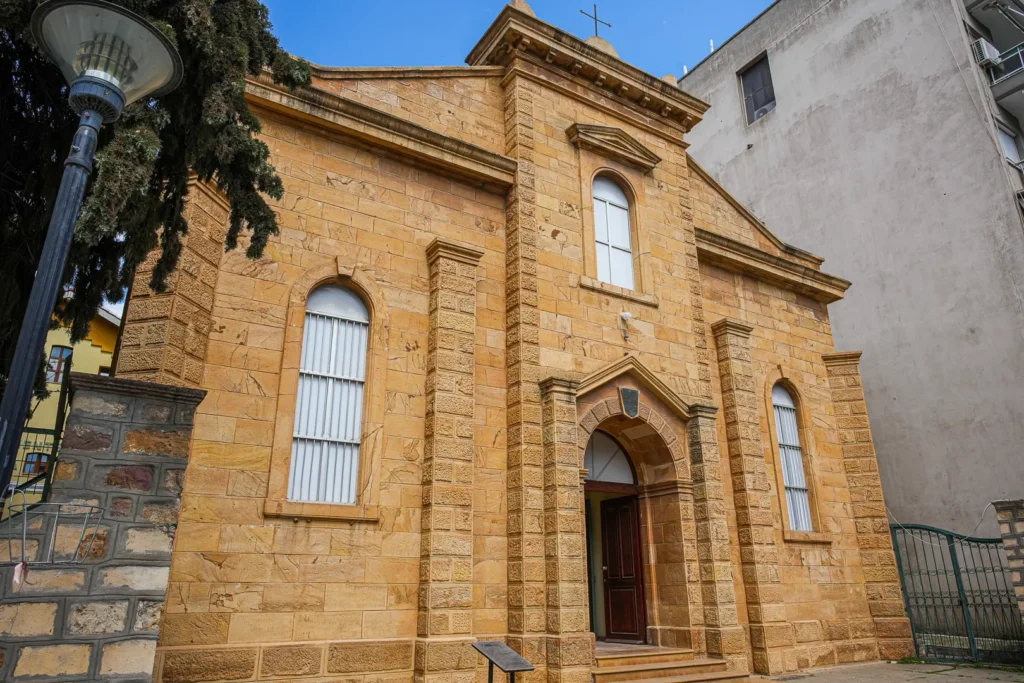
Holy Catholic Church of Saint Joseph
The Holy Catholic Church of Saint Joseph in Alexandroupolis, also known as the Catholic Church of Alexandroupolis, was built in 1901 and is the only Catholic church in Western Thrace. The church is a three-aisled basilica, constructed from hewn stone, featuring two rows of columns made of green marble and rich decorations. After its renovation in 2006, the church frequently hosts cultural events of a religious nature.
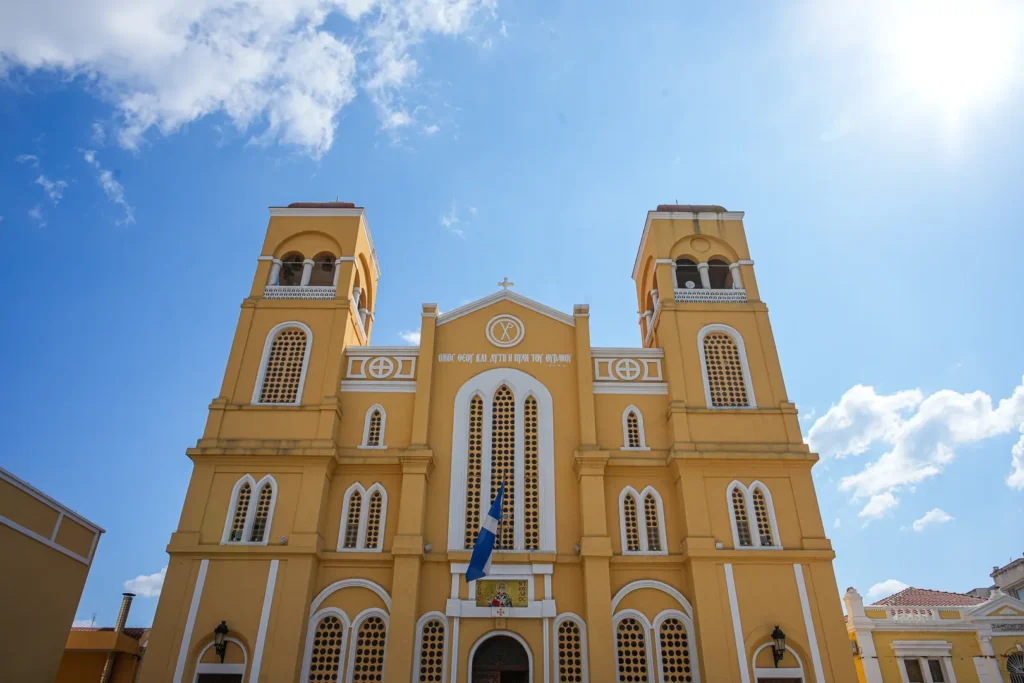
Holy Metropolitan Church of Saint Nicholas
The Holy Metropolitan Church of Saint Nicholas in Alexandroupolis, dedicated to the patron saint of sailors, was founded in 1892 and consecrated in 1901 by the Metropolitan of Ainos, Germanos Theotokas. It is a stone-built basilica with a dome and two bell towers, which were erected in 1908 with a donation from the then Consul of Austria-Hungary in the area, Vlasios Souhor. The protocol of the city’s liberation was signed in the church in 1920. The iconostasis of the church was crafted by Pergamennelis from Mytilene in 1932.
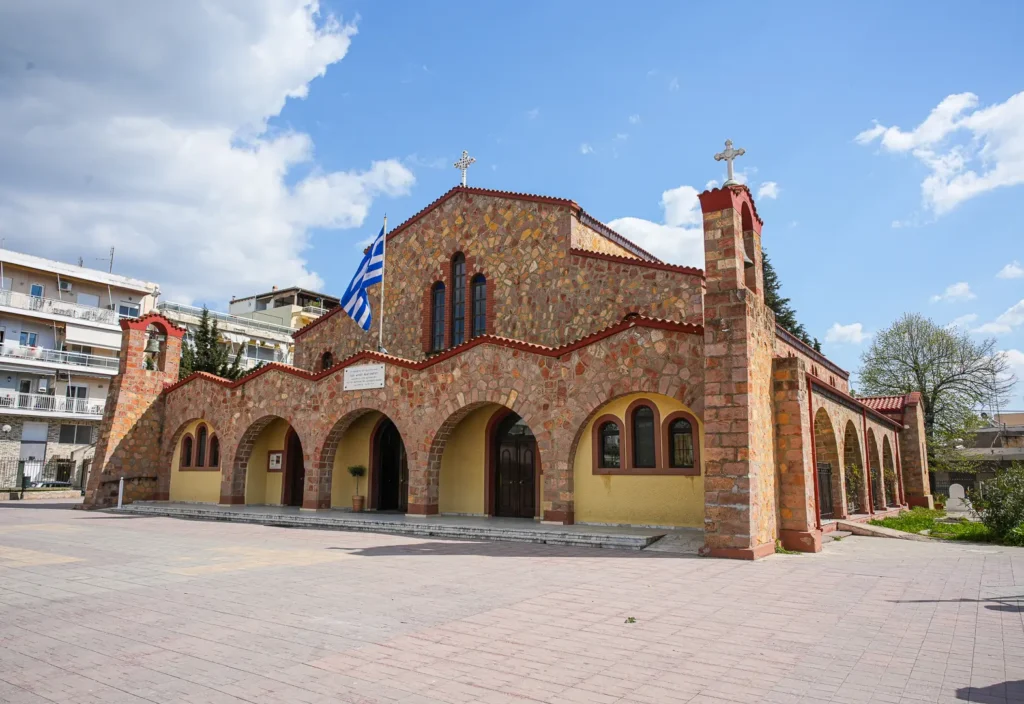
Holy Church of Saint Eleutherius
The Holy Church of Saint Eleutherius in Alexandroupolis is a stone-built, three-aisled basilica without a dome, constructed in the mid-20th century and consecrated in 1955. It is located on Ypsilantou Street, in the heart of the city. The church’s gallery is almost circular, covering a large part of the church and extending up to the altar, similar to that of Saint Demetrius in Thessaloniki. The frescoes of the church, created by the artist Rengo, are considered an excellent example of religious art.

Church-Cave of Saints Theodores
The Church-Cave of Saints Theodores is located near the village of Avanta, close to medieval castles, and is carved into a cave of Mount Zonaios. This rocky church, reminiscent of the cave churches of Cappadocia, is a unique monument of Byzantine art. The frescoes of the church span various periods, with significant phases from the 11th and 13th centuries.

Ancient Olive Grove of Makri
The ancient olive grove of Makri, near Alexandroupoli, is a unique natural and historical treasure. Dating back to prehistoric times, it hosts olive trees that are up to 2,500 years old, serving as living monuments of nature. These trees continue to produce olive oil, offering an exceptional blend of natural beauty and cultural heritage. The area is ideal for visitors wishing to explore its history and experience the tranquility of the landscape, while the production of high-quality olive oil from these ancient trees adds another reason to discover the value of the place.

Evros Delta
The Evros Delta, covering approximately 200,000 acres, is one of the most important wetlands in Europe and is recognized for its ecological significance, hosting rich biodiversity with various species of birds, fish, and plants. The area is a protected site on the Ramsar International Wetlands list and attracts many visitors for wildlife observation, ecotourism, photography, and activities such as hiking and cycling. The Delta offers unique opportunities to explore its natural landscape and fauna.

Ancient Doriskos
Ancient Doriskos, near the village of Saragia in Alexandroupolis, was a strategic hub in antiquity, connecting Asia with Greece. It was founded by the Thracians and later occupied by Persians, Athenians, and Macedonians. Darius I established a fortress in the area in 513 BC, which served as a strategic base. Xerxes passed through Doriskos in 480 BC, and later Lysimachus governed the city. Today, remnants of the ancient wall, tumuli, and artifacts are preserved, highlighting Doriskos’ importance in ancient history.

National Park of Dadia Forest
The Dadia–Lefkimmi–Soufli Forest National Park is one of Greece’s most important protected areas. The region is home to rich biodiversity, with a particular focus on predatory birds, such as the black vulture and the griffon vulture. In addition to its abundant wildlife, the park features unique ecosystems, including coniferous and deciduous forests, as well as wetlands that support a variety of plants and animals. Visitors can enjoy activities such as hiking, birdwatching, and nature tours, while the park’s Information Center offers educational programs and details about the area’s natural heritage.

Nipsas Forest
Located 20 kilometers northeast of Alexandroupolis, Nipsas Forest is one of the region’s most impressive nature destinations, boasting rich biodiversity and unique landscapes. The forest is filled with tree species such as oaks, pines, and ancient plane trees, with a beautiful lake at its center. Around the lake, trails have been formed for hiking and nature observation. The area is designated as a Natura habitat, offering visitors the opportunity to enjoy activities like hiking and birdwatching in a tranquil and natural environment.
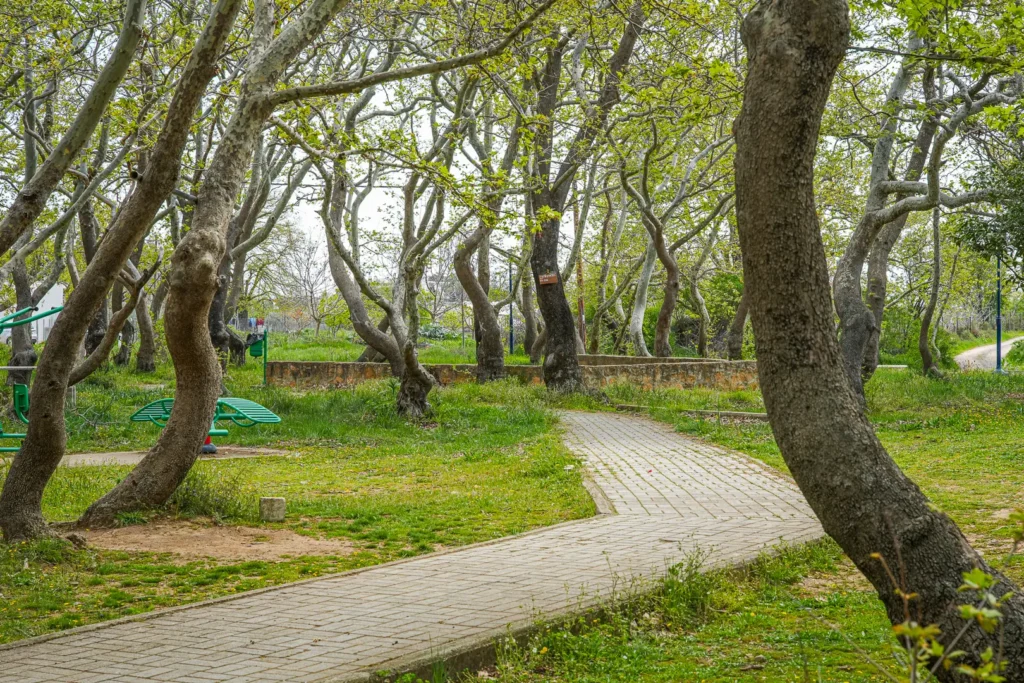
Platanotopos of Maistros
The Platanotopos of Maistros is a popular destination for recreation and nature activities. The area is famous for its centuries-old plane trees, which create a cool and picturesque environment, perfect for picnics and hiking. Especially on May Day, the place fills with visitors who enjoy nature and participate in various events.

Village of Avantas
Avantas is a picturesque village located 10 kilometers north of Alexandroupolis, where the mountains meet the sea. Founded during the Ottoman period as Derveni, it was renamed Avantas after the Asia Minor catastrophe, when refugees settled in the area. Known for its impressive castles, such as the Castle of Avantas, which offers a unique view of the plain, it is an ideal destination for hiking and climbing, with landscapes that include Byzantine towers, waterfalls, and gorges.

Avantas Waterfall
The Avantas Waterfall, also known as the Eagle Waterfall, is located near the village of Avantas, about 10 kilometers north of Alexandroupolis. The area is accessible via a 6-kilometer hiking trail, suitable for beginners in good physical condition. The trail passes through dense vegetation with cedars, oaks, and holm oaks, offering unique views of the waterfall and the surrounding natural landscape. The area is protected, and visitors are urged to follow environmental protection rules during their visit.

Melia
Melia is a small semi-mountainous village in Evros, located at an altitude of 160 meters, about 28 kilometers northeast of Alexandroupolis. The village belongs to the Municipality of Alexandroupolis and is known for its historic windmills, which are a symbol of the area, although they are in a state of decay and require maintenance. The few inhabitants, mostly descendants of Greek refugees and Sarakatsani, live in a peaceful environment, which attracts visitors seeking tranquility and natural beauty.

Windmills of Melia
The windmills of Melia, in the Evros region, are a historical symbol of the area and were used for grinding cereals, providing flour to the local community. Although the exact date of their construction remains unknown, they are now a popular destination for photographers and visitors who appreciate their nostalgic atmosphere and historical significance. Despite the wear of time, the windmills remain a living piece of the region’s cultural heritage, and the surrounding area offers unique opportunities for exploration and photography.

Aisymi
Aisymi is a settlement in the Evros region, part of the Municipality of Alexandroupolis, located approximately 22.5 kilometers north of the city. It was founded in the 11th century and was initially named Sokol. Today, it is known for the Museum of Sarakatsani Tradition, which highlights the culture and traditions of the Sarakatsani people. The area offers a peaceful environment and natural beauty, making it ideal for visitors interested in local history and traditions.

Sykkorachi
Sykkorachi is a semi-mountainous settlement in the Municipality of Alexandroupolis, at an altitude of 200 meters, located 36 km north of Alexandroupolis and 37 km southeast of Komotini. In the past, the area was part of the Municipality of Alexandroupolis, but today it is a local community with a population of 269 residents (as of 2001). The settlement, which was formerly known as Tsobankioi and was renamed Sykkorachi in 1953, is significant for the area due to the railway line passing through the village, connecting Thessaloniki with Alexandroupolis.

Lake of Nipsa Reservoir
The Nipsa Reservoir Lake is located near the village of Nipsa, about 20 kilometers north of Alexandroupolis. The area is surrounded by the Nipsa Forest, which is designated as a Natura habitat and is part of the “Southern Forest Complex of Evros.” The forest is covered with oaks, pines, and ancient plane trees, offering ideal conditions for hiking and nature observation. Both the lake and the forest are popular destinations for nature enthusiasts and visitors who wish to explore the region’s rich biodiversity.
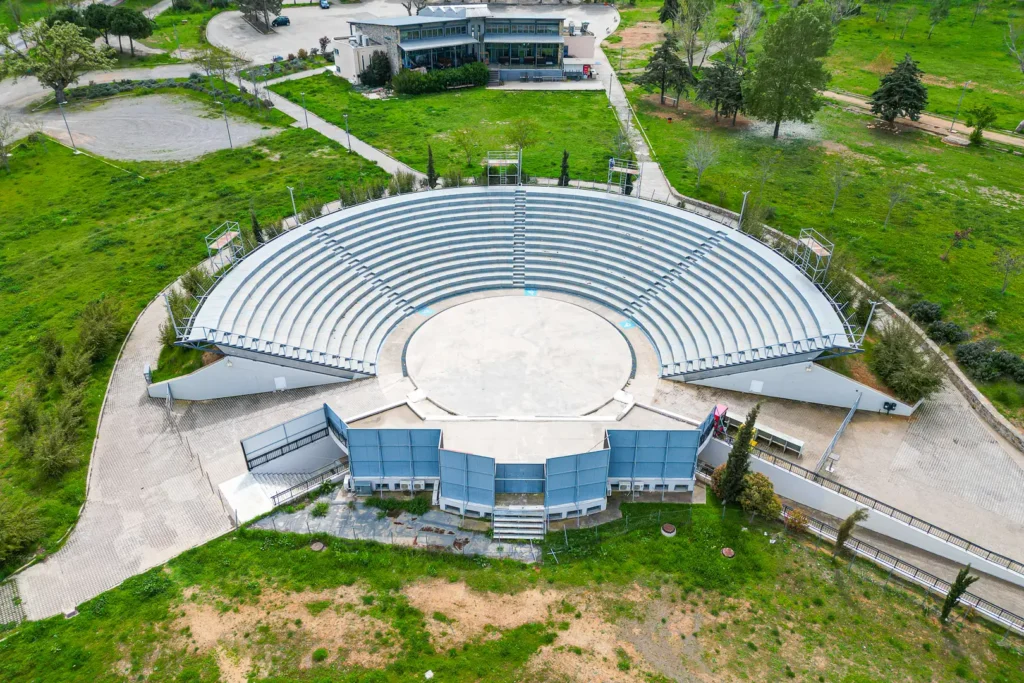
Altinalmazi Park
Altinalmazi Park, also known as the Altinalmazi Ecological Park, is a modern garden-theater located in Alexandroupolis, serving as a center for cultural events and recreation. It is situated in the Kondyli area, near the intersection of Chatzisavva and Georgiadi Streets, covering an area of 80 acres. The park has a seating capacity of about 1,400, providing ample space for theatrical performances, concerts, and other cultural activities. In addition to the garden-theater, the park features a refreshment stand, walking paths, green spaces, changing rooms, and pavilions, making it an ideal destination for visitors who wish to combine entertainment with nature.
